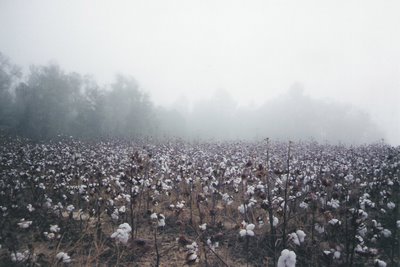Near Owensboro, Wilcox County, Georgia, 2002.
c. Brian Brown
Before the spread of the boll weevil from Southern Alabama into Southwest Georgia in the early 1920s, cotton was the South's top crop. Farmers saw prices fall from a high of 30 cents/lb during World War I, to a dismal 5 cents/lb by the mid-1920s. Not only did this crisis endanger the livelihood of a hundreds of thousands of black sharecroppers, it also gave rise to a growing class of white sharecroppers, and was the beginning of the end of the tenant/sharecropping system. In recent years, modern agricultural science has created a host of chemicals to suppress the problem, and the crop has seen a major comeback.


0 Comments:
Post a Comment
<< Home